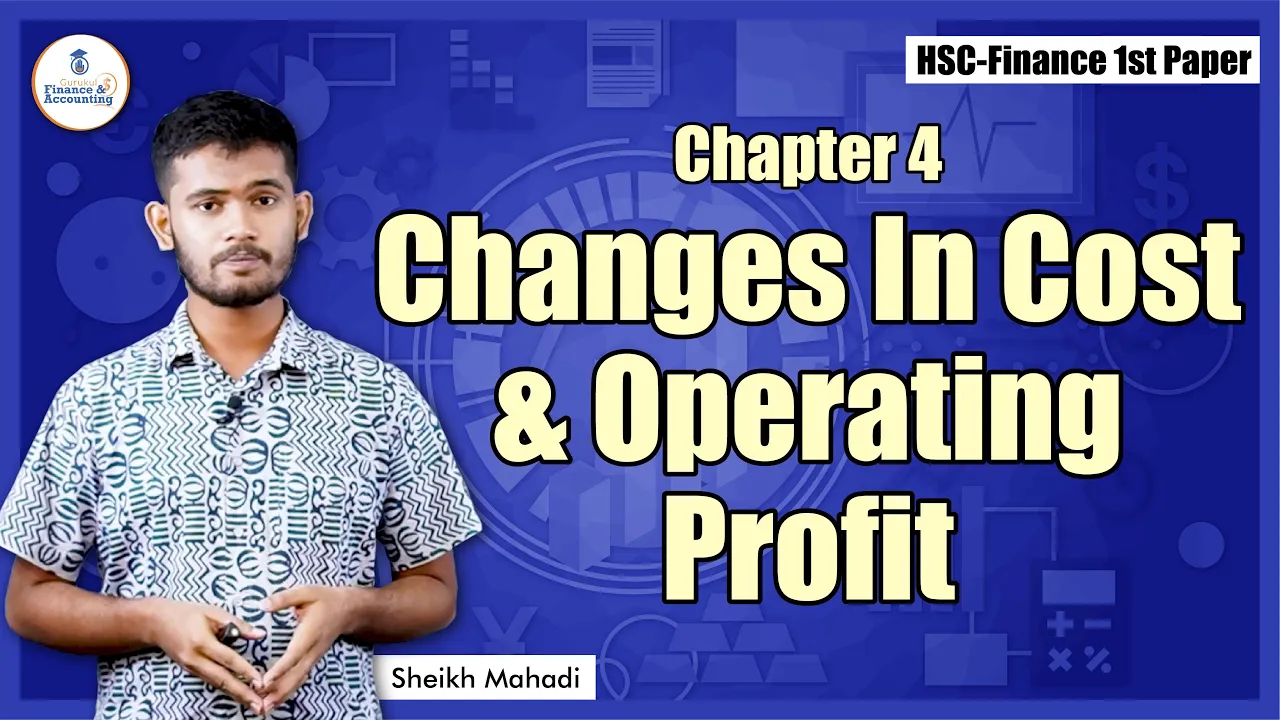Changes In Cost and Operating Profit class is for the HSC candidates or for the students of classes 11 and 12. This class is a part of HSC (11-12) [ এইচএসসি (১১-১২) ], Finance and Banking 1st paper. You can find it in the Finance 1st Paper, chapter 4, the topic name is “Changes In Cost and Operating Profit”. This class will help you in your upcoming HSC examination.
Changes In Cost and Operating Profit
What Is Operating Profit?
A company’s operating profit is its total earnings from its core business functions for a given period, excluding the deduction of interest and taxes. It also excludes any profits earned from ancillary investments, such as earnings from other businesses that a company has a part interest in. An operating loss occurs when core business income ends up being lower than expenses.

KEY TAKEAWAYS
- Operating profit is the net income derived from a company’s primary or core business operations.
- Operating profit is also (wrongfully) referred to as earnings before interest and tax (EBIT), as interest and taxes are non-operating expenses.
- Operating profit does not include non-operating income, but EBIT does.
- Operating profit eliminates several extraneous and indirect factors that can obscure a company’s real performance.
- Operating profit margin shows how well a company turns gross revenue into this figure.
Formula and Calculation of Operating Profit
The formula used to calculate operating profit is:
Operating Profit = Gross Profit – Operating Expenses – Depreciation – Amortization
Where:
Gross Profit is calculated as Revenue – Cost of Goods Sold (COGS)

What Operating Profit Can Tell You
Operating profit serves as a highly accurate indicator of a business’s health because it removes all extraneous factors from the calculation. All expenses that are necessary to keep the business running are included, which is why operating profit takes into account asset-related depreciation and amortization—accounting tools that result from a firm’s operations.
Operating profit is also referred to as operating income as well as earnings before interest and tax (EBIT)—although wrongfully, the latter includes non-operating income, which is not part of operating profit. If a firm does not have any non-operating income, its operating profit will equal EBIT.
Companies can choose to present their operating profit figures in place of their net profit figures, as the net profit of a company contains the effects of taxes and interest payments. If a company has a particularly high debt load, the operating profit may present the company’s financial situation more positively than the net profit reflects.
While positive operating profit may express the overall health of a business, it does not guarantee future profitability. Case in point: A company with a high debt load may show a positive operating profit while simultaneously experiencing net losses. In addition, large but extraneous costs are not represented, which may also show a company with a negative net profit having a positive operating profit.

Changes In Cost and Operating Profit details:
See more:
